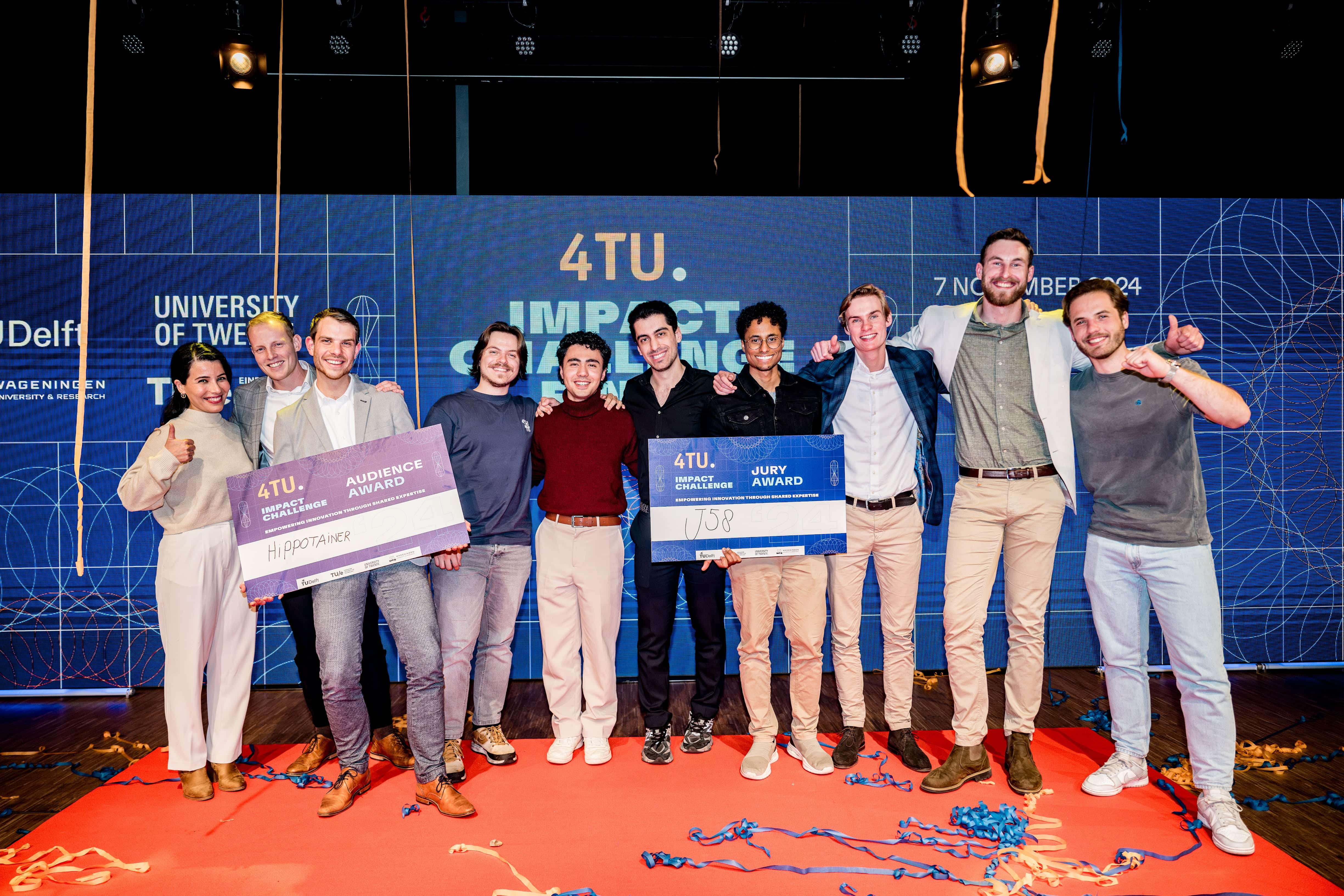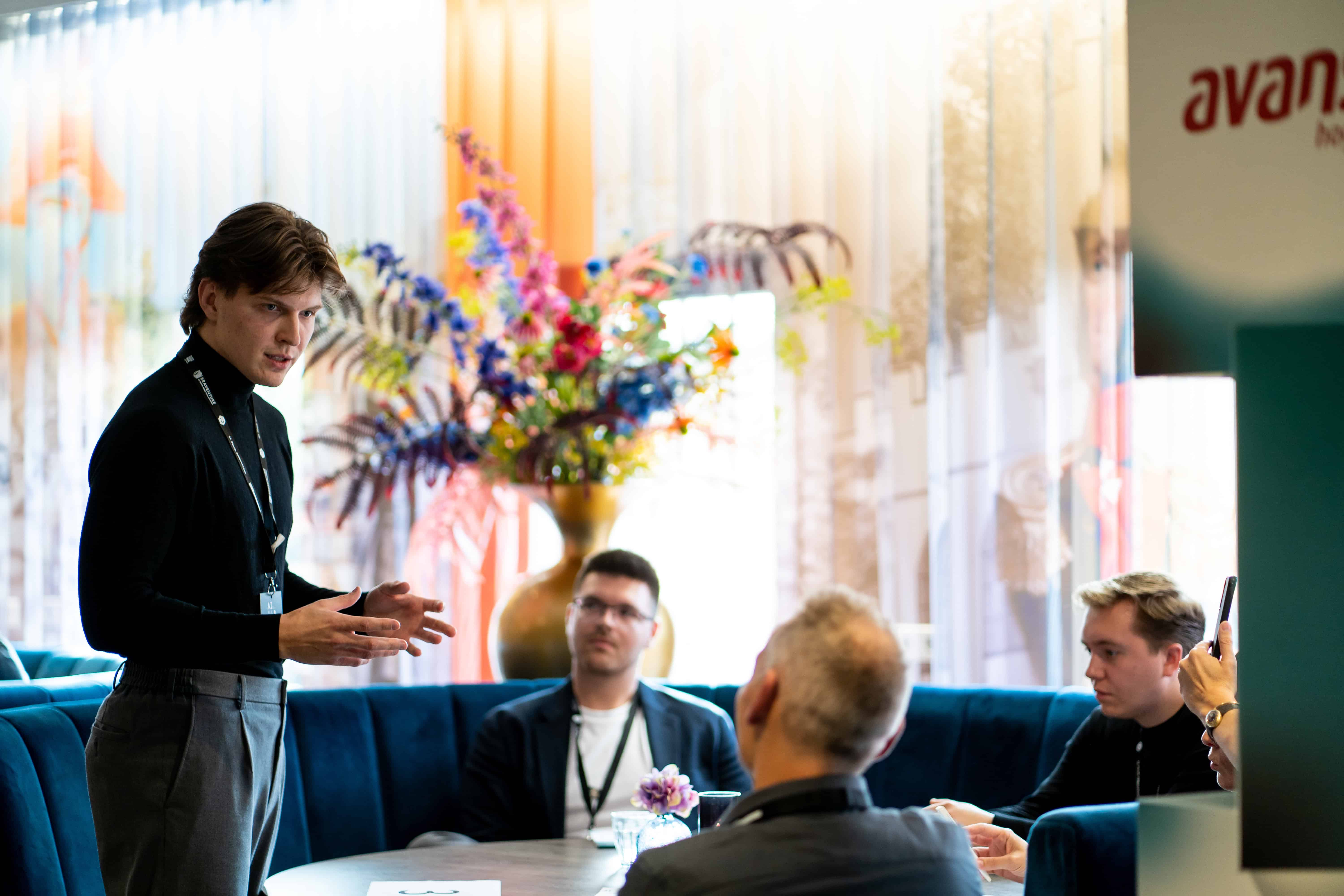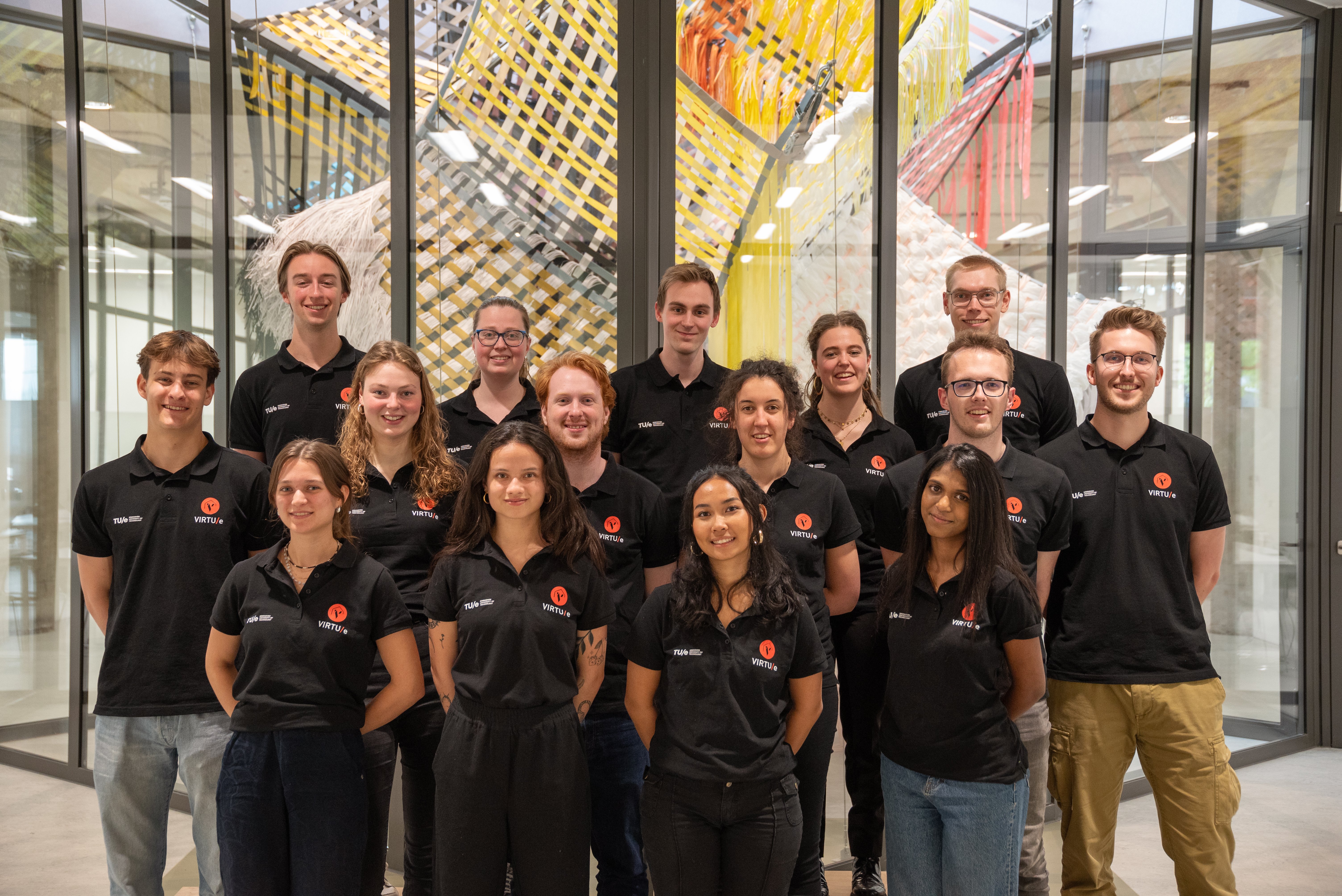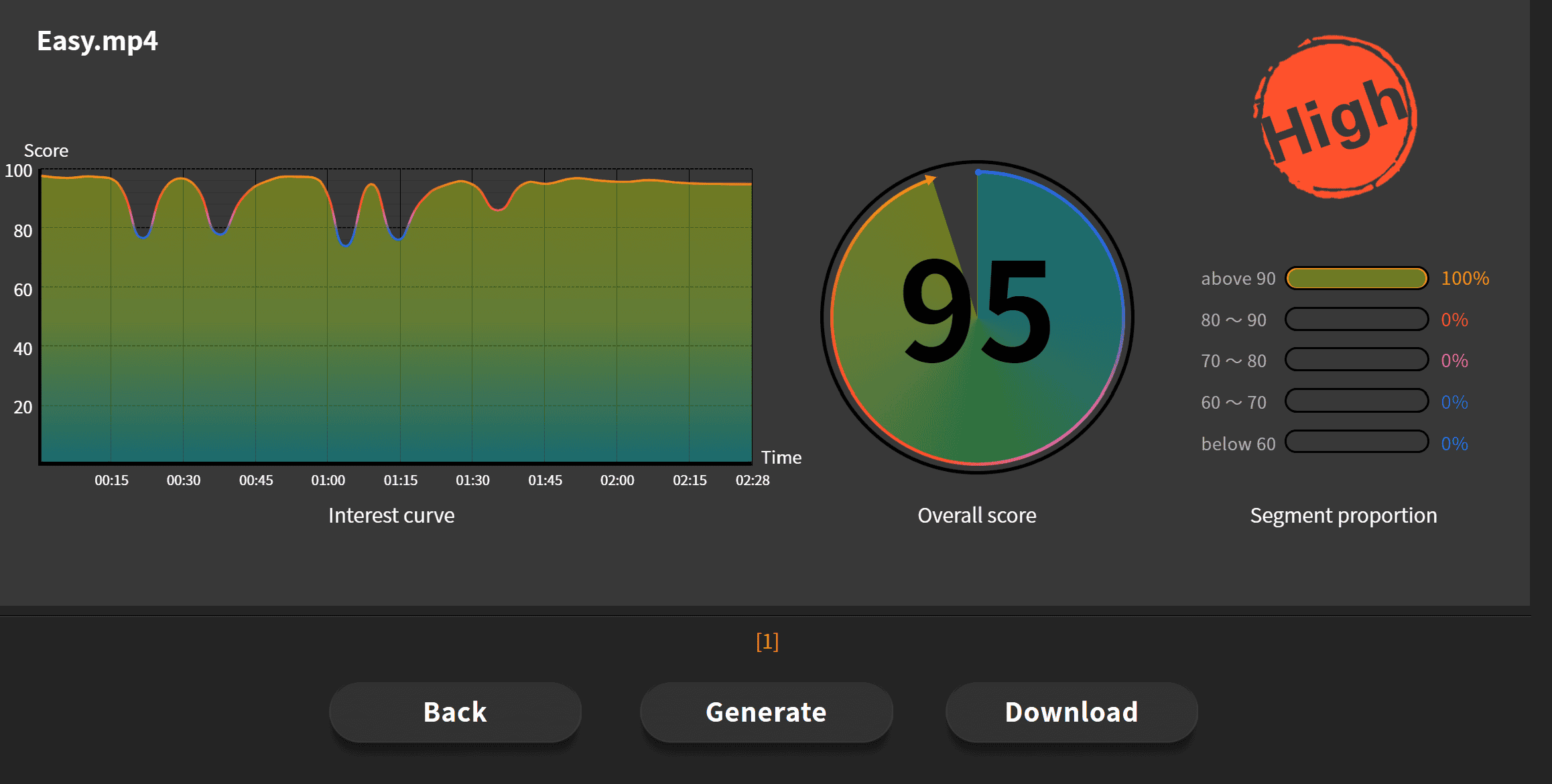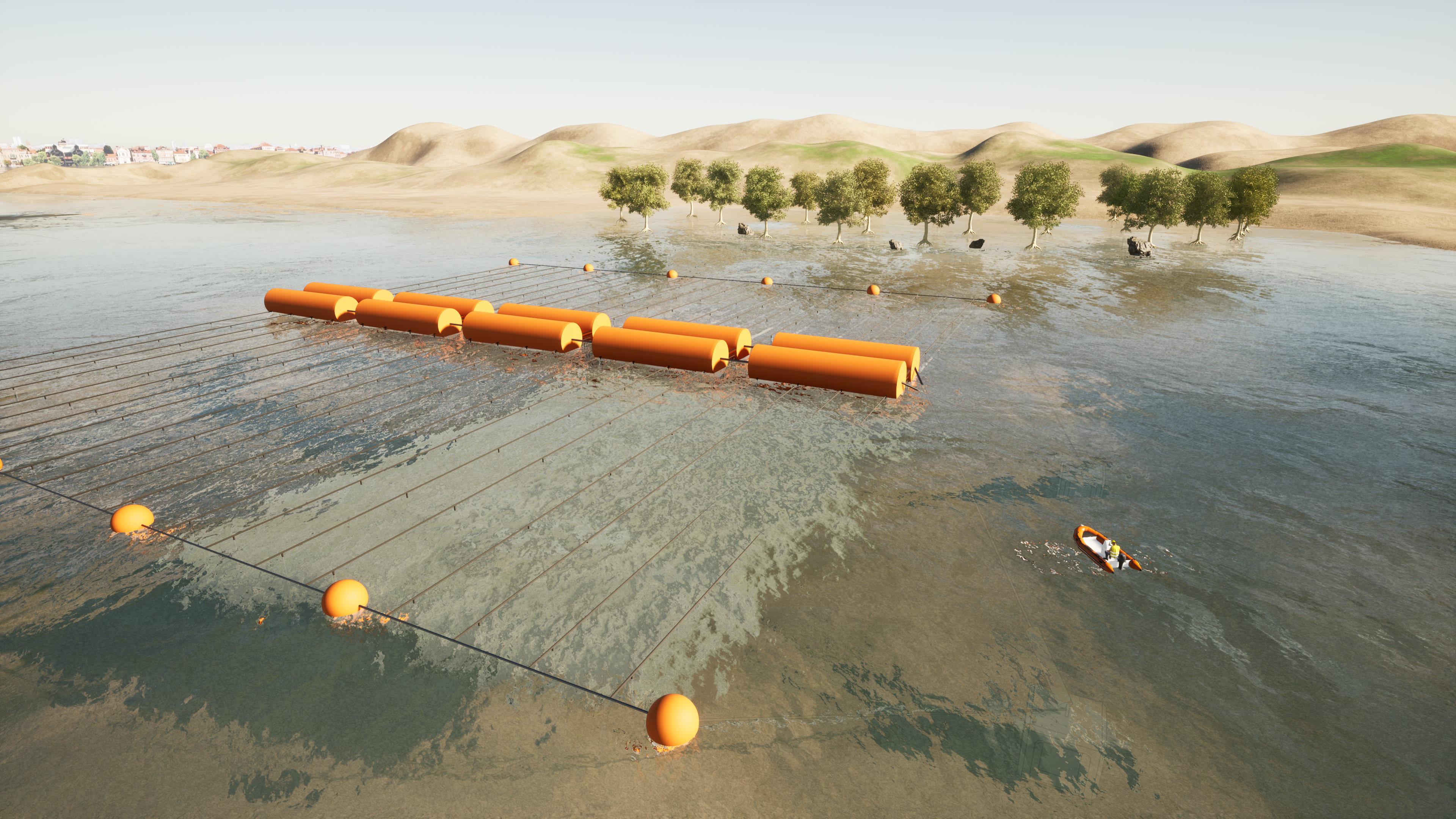
Through the Dutch 4TU Impact Challenge, the four technical universities in the Netherlands – Delft, Twente, Eindhoven and Wageningen – want to stimulate students to combine innovative ideas with entrepreneurship. Following four regional preliminaries, the final is this afternoon (19 November 2020).
There, the last eight remaining teams (two per university) are invited to pitch their idea in front of a five-member jury of experts. The winner is allowed to accompany the Dutch trade mission to the World Expo in Dubai (postponed until corona permits it). There is also a public prize of €1,500.
The finals can be followed via the live stream from 2.30 pm this afternoon. Below are brief descriptions of each of the projects in the final that are being judged by Lotte Leufkens (Cloud Cuddle), Nils Beers (Techleap), David Cerda Salzmann (Forward One), Harm de Vries (Innovation Industries) and Nele Valkeniers (Dutch Ministry of Defence).
TU Eindhoven – GOAL3
More than 2 million children under the age of 5 in low- and middle-income countries die from infectious diseases that can be easily treated. For a lot of diseases, every hour of delay in diagnosis means a 10% increase in mortality. GOAL3 offers a high quality patient monitoring system that enables physicians to make an early diagnosis of acute diseases, such as sepsis. By combining durable and easy to use hardware, supporting software and smart algorithms, GOAL3 aims to create a system that automatically detects diseases that are currently going undetected.
TU Eindhoven – XYZ Dynamics
One of the biggest environmental problems are greenhouse gases. XYZ Dynamics offers sustainable mobility with the development of the AxLectric. The AxLectric is an electric powertrain for utility vehicles. It guarantees fully electric mobility in emission-free traffic zones, thanks to the intelligent EMS – GEO Fencing system. The additional drive shaft can be mounted in a vehicle fitted with an internal combustion engine. This is very tempting for small-scale entrepreneurs such as construction workers, for example. Because this means that they can continue to use their existing vehicle as per usual. If they enter an emission cost zone in the city, the driver simply switches from the standard drive to the electric drive shaft from XYZ Dynamics.
University of Twente – Orbitrary
Currently, millions of metric tons of plastic end up in our environment because only 10 percent of the collected plastic is actually recycled into new products. At the same time, there is a constant and high demand for adaptable and reusable construction components.

With the help of recycled plastic (PP), panels are pressed into shape that are designed in such a way that you can build structures without glue, such as temporary buildings. These are uses that require just slightly more work than a tent, but must be able to be dismantled quickly. For example, shelters for refugees, terrace decking for the catering industry or buildings on event sites. A new, sustainable (re)use of waste plastic can be created this way.
University of Twente – LogiXair
With the use of drones, logistics service providers tend to pay particular attention to ‘last mile delivery.’ LogiXair focuses on the delivery of heavy loads. The start-up wants to improve transit times by automating the process and using a network of unmanned aircraft (UAV’s) to cover a larger area. This approach achieves the goal of Same-day (or) One-Day Delivery.

LogXair’s UAV fleet has adopted the design philosophy of the Aerial-Trailer Truck configuration. This enables multiple types of cargo to be transported with different types of cargo containers and a single aircraft. Plus, it also reduces the loading and unloading time on the ground down to a fraction of what is normally takes.
TU Delft – ZED
With the growth of the ‘Internet of Things’, there is a huge demand for small, inexpensive wireless devices. These devices run on batteries that are not only expensive, but unsustainable as well.

ZED (or Zero Energy Development) is a B2B provider for IOT solutions. These are wireless and battery-free applications. ZED sees opportunities for applications in such areas as inventory, freight management or preventive maintenance.
TU Delft – Respire
Air pollution is a major environmental risk. Research shows that air pollution in cities is not evenly distributed. It can in fact be up to eight times worse on one side of a city block than on the other. Respire proposes a sensor network of air quality monitoring devices that is relatively inexpensive ( €20 per unit). It operates under its own power and is small enough to be attached to any moving vehicle (on cars, buses, etc.).
A pollution map of the entire city can be compiled on the basis of the data transmitted by the mobile sensors. Traffic can then be controlled in order to reduce emissions and reduce the air pollution concentration in highly targeted areas. The same data can also be used for a predictive model so that healthy routes and times with the least amount of pollution can be suggested for cyclists, for example.
Wageningen University & Research – FarmVent
Vertical agriculture is not new. But vertical agriculture in a store is new, according to the inventors Nikolaos Alfieris (26) and Orestis Spirou (28). Both of whom are master students of Biosystems Engineering in Wageningen. Their idea: Grow and harvest live produce in a smart greenhouse at a retail outlet. This is much more sustainable. The two-meter high vending machine offer customers a choice of 500 herbal plants spread across four levels of one square meter each. With just a few presses of a button, customers can select their favorite and harvest it on the spot.
Apart from sustainability, team FarmVent feels that it is important to keep the current production market intact. “The vending machine is an extra sales outlet for established growers, we only supply the technology. Cameras and sensors continuously record the conditions in the vending machine and the growth process is perfected automatically with that data.”
Wageningen University & Research – ReShore Living
The coast can be protected by spraying sand on it. Or you can lay a rocky breakwater off the coast. This can be done differently and more ‘actively and livelier’, in the words of Mitchell Williams (26) and Frej Gustafsson (23). Their design ReShore Living not only protects coastal land, but also life underwater. And it offers a home to oysters, mussels and seaweed.

“Next year, the first ever living breakwater should be trialed in the Oosterschelde,” say Mitchell Williams (26) and Frej Gustafsson (23) determinedly. Each element is 15 meters in length. Connected together, they will provide a full replacement for the existing structures that now protect the coast. There is one more advantage. “The shellfish that grow on the structure can also be used for food. It depends on what a customer wants. We are thinking, for example, about ports, governments and hydraulic engineering companies.”



